Heb je hulp of advies nodig?+44 (0)1782 454499
PRODUCTEN GEBRUIKT IN DIT PROJECT
Hoewel dit niet per se een uitputtende lijst is, werden de volgende gereedschappen en materialen, geleverd door Easy Composites, in dit project gebruikt.
De hoeveelheid die hieronder wordt weergegeven, is de geschatte hoeveelheid die in het project wordt gebruikt, afgerond naar de dichtstbijzijnde beschikbare kitgrootte of hoeveelheid.
MATERIALEN & VERBRUIKSARTIKELEN
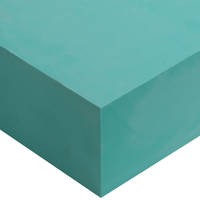
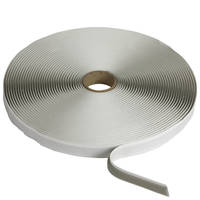
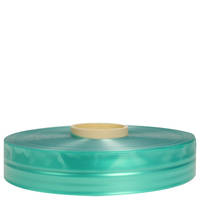
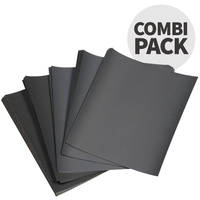
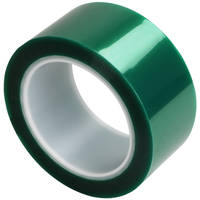
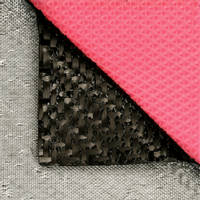
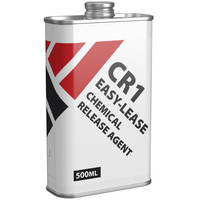
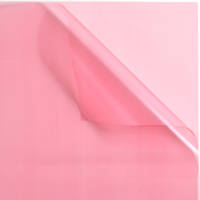
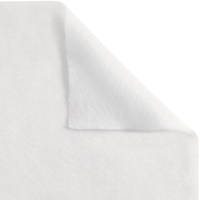
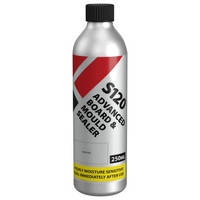
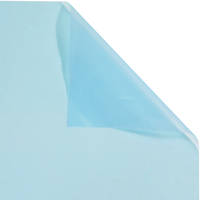
GEREEDSCHAP & UITRUSTING
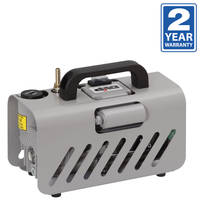
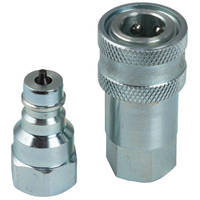
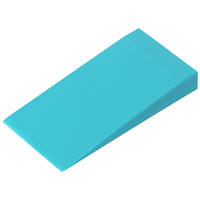
VERSTERKINGEN
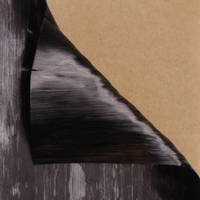
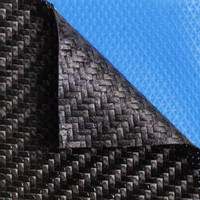
MATERIALEN VOOR HET MAKEN VAN MALLEN
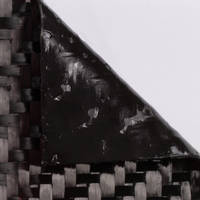
VIDEO HANDLEIDING
Een Fietsframe van Koolstofvezel Maken van Begin tot Eind
Diepgaand technisch interview met fietsontwerper en composietenenthousiasteling Vlad Yordinov over het proces van het maken van een productiekwaliteit, raceklaar koolstofvezel frame voor een downhill mountainbike, van het oorspronkelijke CAD-ontwerp tot de uiteindelijke montage.
In deze 40 minuten durende video laat Vlad zien hoe hij van zijn oorspronkelijke ontwerp een afgewerkte fiets heeft gemaakt zonder te hoeven investeren in de enorm dure billet aluminium gereedschappen die over het algemeen door de grote fabrikanten worden gebruikt om fietsframes van koolstofvezel te maken. Door veel minder dure composiet gereedschappen te gebruiken en het laminaat uit te harden onder vacuümdruk in plaats van onder positieve druk van een opblaasbare blaas, is Vlad in staat om een high performance fietsframe te maken voor minder dan 1/10 van de typische kosten om zelfs maar een prototype carbon fietsframe te maken.
UITSPLITSING TUTORIAL
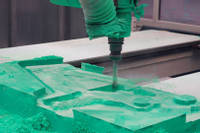
1. Patronen bewerkt uit tooling board
Zodra het ontwerp van het frame en het patroon zijn bepaald, kan het worden bewerkt uit tooling board. Voor dit proces wordt epoxy tooling board gebruikt, omdat het de eigenschappen heeft die nodig zijn om het te kunnen gebruiken voor de productie van koolstofvezel gereedschap met behulp van een gespecialiseerde pre-preg voor gereedschap.
De printplaat zelf wordt bewerkt op een 3-assige machine. In dit geval is het ontwerp zodanig dat alleen een 3-assige machine nodig is om de vorm en de details te doen. Voor complexere projecten kan een 5-assige machine nodig zijn.
De machine snijdt de plaat in verschillende stappen, beginnend met een zeer ruwe snede en herhaalt de bewerkingen met steeds fijnere sneden tot het patroon volledig uit het blok is. De afwerking van het bewerkingsproces moet echter nog verder met de hand worden gefrijnd en afgedicht om de kwaliteit hoog genoeg te krijgen voor het gietproces.
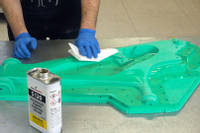
2. De patronen afwerken en verzegelen
Na het bewerken moet het patroon worden gladgemaakt door het oppervlak te schuren tot de gewenste afwerking is bereikt. Het patroon moet dan worden verzegeld om een glanzend verzegeld oppervlak te krijgen, klaar om mee te gieten.
Er worden meerdere lagen kit gebruikt op het belangrijkste deel van het patroon om de hoogwaardige, hoogglanzende afwerking te krijgen. Normaal gesproken worden slechts 2 lagen kit gebruikt op de flenzen - dit is om ervoor te zorgen dat wanneer de mal aan elkaar wordt geklemd, er een zeer hoge mate van nauwkeurigheid en precisie is op de aangrenzende oppervlakken.
Vanwege de complexiteit van het frame is het nodig om inzetstukken op de mal te gebruiken om ervoor te zorgen dat ondersnijdingen en bepaalde complexe details correct worden gevormd. Deze gebieden hebben ook precisienauwkeurigheidseisen, dus er mogen maar een paar lagen worden gebruikt.
In de mal zijn gaten geboord om metalen uitlijningsinzetstukken aan te brengen. Dit is om ervoor te zorgen dat als de matrijzen eenmaal gemaakt zijn, ze perfect uitgelijnd zijn zodat de gaten gebruikt kunnen worden om de matrijshelften op precies de juiste positie aan elkaar te bouten. De gaten worden zo dicht mogelijk bij de rand van het gereedschap geplaatst, zodat de klemkracht rond de kritieke verbindingsgebieden consistent is.
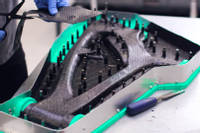
3. De vrouwelijke mallen maken
De mal wordt gemaakt van het XPREG XT135 Tooling pre-preg systeem. Dit bestaat uit een toplaag en een backinglaag. In dit geval is één laag oppervlaktelaag gebruikt en vervolgens is de oppervlaktelaag ondersteund met 5 lagen backinglaag om een goede sterke en stijve mal te krijgen.
Om de deklaag in de moeilijke hoeken en strak rond de pennen te krijgen, worden op die moeilijke plekken stroken deklaag gebruikt met de vezels onder een hoek van 45 graden. De rest van de deklaag wordt dan opgebouwd. In dit geval werd de mal vanwege de complexe vorm en de nauwkeurigheidskritische aard van het matrijsproces ontkruld door hem in een vacuümzak te plaatsen met een geperforeerde loslaatfolie en er vacuüm op te trekken. Dit helpt om al het pre-preg materiaal in de krappe hoeken te krijgen.
De backinglagen worden dan opgebouwd tot alle 5 lagen klaar zijn. Regelmatig ontbramen helpt bij het consolideren van de vezels en zorgt ervoor dat er geen holtes ontstaan in de lay-up.
De mal is nu klaar om uitgehard te worden en wordt vacuüm verpakt en uitgehard bij 60°C voor de eerste uithardingscyclus bij lage temperatuur. De reden dat de mal niet bij hogere temperatuur wordt uitgehard, is dat epoxy gereedschapblok iets uitzet bij hogere temperatuur, waardoor de maatnauwkeurigheid toeneemt.
In dit stadium wordt de mal ontvormd van het patroon. Het Tooling block komt er over het algemeen vrij gemakkelijk uit. De pennen zitten echter stevig vast en moeten voorzichtig en met de nodige tijd verwijderd worden. Er kunnen handgrepen gebruikt worden om ze eruit te trekken, maar een goede techniek in dit geval was draaien en wikkelen met een boormachine.
Ditzelfde proces wordt herhaald voor de tweede helft van de mal. Als beide helften ontvormd en bijgesneden zijn, zijn ze klaar om nagehard te worden. De post-uitharding rondt de uitharding van de mal zelf af en zorgt ervoor dat de mal gebruikt kan worden op de hoge uithardingstemperatuur van de pre-preg voor het afgewerkte onderdeel. In dit geval, omdat het een gedeelde mal is, worden beide helften aan elkaar geschroefd voor de post-uitharding. Dit is om ervoor te zorgen dat de montagevlakken perfect uitgelijnd zijn en geen overmatige spanning ondervinden wanneer ze met bouten aan elkaar worden bevestigd.
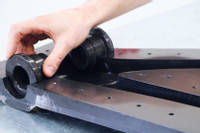
4. Inzetstukken voor matrijzen
Inzetstukken zijn nodig op bepaalde plaatsen, bijvoorbeeld waar het frame splitst. Met de inzetstukken kan het gebied rond de breuk volledig en correct als één deel worden gevormd. De inzetstukken helpen ook bij het ontvormen van dergelijke complexe delen van het frame.
Net als bij de hoofdmal wordt er een patroon voor de insert gemaakt van een gereedschapblok. Vervolgens wordt een extrahardende silicone gebruikt om een mal te maken van het patroon. Na uitharding kan de mal gemakkelijk worden losgemaakt van het patroon en is deze klaar om de insert te maken.
De insert is gegoten uit epoxy van hoge temperatuur en gefreesd koolstof/grafietpoeder. Dit voegt sterkte toe aan de insert en doordat er een grote hoeveelheid koolstof in zit, heeft de insert een vergelijkbare CTE als de koolstofmal, wat betekent dat ze op dezelfde manier uitzetten en krimpen tijdens het uithardingsproces.
Het gegoten inzetstuk moet worden gladgemaakt en afgedicht met S120 voor een gepolijste hoogglansafwerking. Daarna wordt het voorzien van een release coating en is het klaar voor gebruik. Een voordeel van het gebruik van gegoten inzetstukken uit een siliconenmal is dat als het nodig is, het inzetstuk kan worden gebroken of vernietigd tijdens het ontvormen om het frame te redden, maar toch snel opnieuw kan worden gegoten met behulp van de siliconenmal.
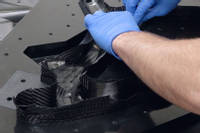
5. Het frame lamineren
De frameconstructie voor dit ontwerp maakt gebruik van een mix van geweven keper pre-preg weefsels en uni-directionele pre-preg weefsels. De eerste stap is het maken van sjablonen voor de oppervlaktelaag van geweven pre-preg. Dit wordt met de hand gedaan en is cruciaal om de vezeloriëntatie tussen mallen en secties binnen elke mal op elkaar af te stemmen omdat het een zichtbare cosmetische laag is.
Twee geweven lagen worden in de mallen gelegd, waarbij de eerste laag volgens de sjablonen wordt georiënteerd. De mallen worden vervolgens ontbraamd voordat de tweede laag wordt aangebracht. De tweede laag is georiënteerd onder een hoek van 45° om torsie en torsiesterkte toe te voegen.
Er worden mallen gemaakt voor de UD pre-preg en de pre-preg wordt in één keer uitgesneden. Er zitten meer dan 200 stukken pre-preg in een frame van deze grootte. Het UD-weefsel voegt veel sterkte toe in de richting waarin de vezels zijn georiënteerd. Aangezien dit frame hoepel- en torsiesterkte heeft van de geweven lagen, is het grootste deel van het UD-weefsel in de hoofdbuizen langs de lengte van de buizen gericht om stijfheid over de hele lengte van de buizen te bieden. De UD-oriëntatie is gedraaid rond bevestigingen en steunen in de specifieke richtingen waarin de krachten op die plaatsen terechtkomen. Over het geheel genomen hebben de hoofdbuizen op een frame als dit 2 geweven bovenlagen, 4 UD-lagen en een laatste binnenlaag. Omdat het om een prototype frame gaat, is het waarschijnlijk dat na het testen het aantal lagen op veel plaatsen zal worden verminderd voor frames die later worden geproduceerd.
In structureel kritieke gebieden worden extra lagen materiaal gebruikt voor extra sterkte en wordt de oriëntatie gevarieerd om de belasting aan te passen. Bijvoorbeeld rond veel van de pennen wordt het UD-weefsel gedraaid, zodat wanneer het ontvormd en gebruikt wordt, het gatgebied zeer sterk is omdat er geen doorgesneden vezels rond het gat zelf zijn. Rond de vele inserts is een specifieke layup nodig, zowel voor de lengte en de belasting van die gebieden als voor de verwerking van het onderdeel. Sommige gebieden zijn ontoegankelijk voor vacuümzakken en zijn dus afhankelijk van de compressie van de insert en de mal om de vezels goed te consolideren.
Er worden overlapverbindingen gemaakt op de mallen. Dit wordt gedaan zodat wanneer de mallen worden samengevoegd, er voldoende sterkte is op de plaatsen waar het frame wordt samengevoegd. De overlappende verbinding loopt taps toe in de breedte en in meerdere lagen om ervoor te zorgen dat de overlappende verbinding zijn sterkte behoudt. Tot slot worden in dit stadium enkele van de definitieve inzetstukken gelamineerd en op hun plaats aangebracht.
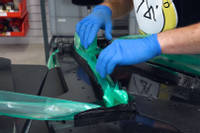
6. Interne vacuümzakken
Bij grootschalige productie wordt voor deze fase meestal een blaas gebruikt, maar de blazen worden speciaal geproduceerd en vereisen duur billetgereedschap. Voor de productie van kleine volumes is het gebruik van vacuümzakken beter haalbaar.
Buisfolie voor vacuümzakken wordt opgemeten en op maat gesneden. Eén uiteinde van elke buis wordt dan thermisch geseald om het aan dat uiteinde luchtdicht te maken. Bij gebruik van deze opvulfolie is het noodzakelijk om folie aan te brengen op één deel van de mal. Dit is zodat, wanneer het vacuüm wordt getrokken, de opvulfolie vrij over het oppervlak kan glijden terwijl het uitzet en over het oppervlak van de mal drukt. De folie moet zo worden bijgesneden dat er niets per ongeluk over de overlapvlakken terechtkomt, wat hechtingsproblemen en een zwak punt op het frame kan veroorzaken. Daarom wordt de folie alleen aan de kant met de overlappingen aangebracht.
De zak wordt voorzichtig in elke buis gelegd, zodat er genoeg over is om goed uit te zetten. Op de plekken waar de uiteinden van de zak elkaar raken, is er een beetje overlap zodat wanneer het vacuüm wordt getrokken, elk deel van de mal de zak heeft.
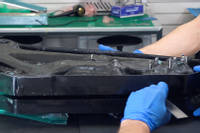
7. De mallen sluiten
Deze fase is cruciaal omdat een verkeerd uitgelijnde overlap of een vastzittende zak het hele project kan verpesten. De overlappen en de zak moeten zo goed mogelijk worden omgevouwen zodat er geen materiaal op de flens komt.
De mal wordt met een kleine opening vastgehouden, zodat je door de opening kunt kijken om te controleren of er geen materiaal vastzit. Met een plat gereedschap kun je materiaal dat iets verplaatst moet worden, manipuleren. De mal wordt dan volledig gesloten.
De 2 malhelften worden uitgelijnd met pinnen die rond de mal zijn geplaatst. De twee helften worden vervolgens aan elkaar geschroefd.
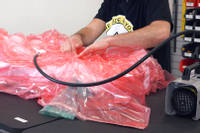
8. Externe vacuümzak
In dit stadium wordt de hele mal in een vacuümzak geplaatst. De 4 stukken buiszak moeten door de verzegeling van de hoofdvacuümzak. Dit is zodat de binnenkant van de buisvormige zakken open is voor de atmosfeer, zodat wanneer er vacuüm wordt getrokken op de hoofdzak, de buisvormige folie door de atmosferische druk tegen de binnenkant van de buizen in de mal wordt gedrukt.
Zodra de zak is geseald, kan er vacuüm worden getrokken op de zak. Zorg ervoor dat de folie in alle hoeken van de mal komt en dat er geen bruggen in de folie zitten. Als dat gebeurd is, moet er een lektest worden uitgevoerd om er zeker van te zijn dat de zak goed geseald is. Daarna laat je de zak een nacht ontbolsteren. Als de ontkoling succesvol is uitgevoerd, is de mal klaar om te worden uitgehard in de oven.
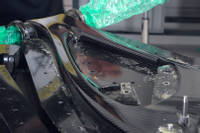
9. Uitharden en ontvormen in de oven
Gemaakt met XPREG XC110, wordt de standaard verlengde uithardingscyclus gebruikt voor de uitharding in de oven. De zak wordt tijdens de uitharding aangesloten op het vacuüm en vervolgens wordt de cyclus uitgevoerd op het onderdeel. Na volledige uitharding en afkoeling is het onderdeel klaar om ontvormd te worden.
Om te ontvormen wordt de zak van de mal gehaald en worden de bouten die de helften bij elkaar houden verwijderd. De borgpennen worden eruit getikt en vervolgens worden de twee helften met behulp van ontvormwiggen langzaam uit elkaar gehaald. Op dit punt kan het fietsframe voorzichtig uit de mal worden gehaald.
Op dit punt worden de inzetstukken verwijderd. Ze tikken er relatief gemakkelijk uit, waarbij gebruik wordt gemaakt van de tochthoeken op het frameontwerp om ze gemakkelijk los te maken. Het frame is dan klaar voor inspectie en om de uitsteeksels en randen bij te werken voor het verven en de uiteindelijke montage.
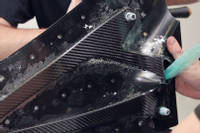
10. De achterste driehoek
De basismethode en -technieken die zijn gebruikt voor de achterste driehoek zijn in principe identiek aan die van het hoofdgedeelte van het frame. Het belangrijkste verschil is de lay-up van de pre-preg die anders is dan bij het frame, met meer UD naar de buitenkant van de buis. Door de kleinere afmetingen zijn de overlapnaden zo ontworpen dat na uitharding de laag gelijkmatig is.
Hetzelfde opzakproces met de vacuümzak en buisvormige opzakfolie wordt uitgevoerd met dezelfde uithardingscyclus. In dit geval is de achterste driehoek gemaakt uit 2 stukken.
Na uitharding worden de achterste driehoeken ontbraamd en bijgesneden, klaar om aan elkaar te worden gelijmd. Voor een toepassing als deze is de VM100 zwarte methacrylaatlijm perfect als structurele lijm. Omdat dit een prototype frame is, is er nog geen mal, dus het frame wordt in elkaar gezet zodat de achterste driehoeken aan elkaar kunnen worden geschroefd om de juiste uitlijning te garanderen terwijl de lijmverbinding uithardt.

11. Afwerking en verf
In dit stadium is het belangrijkste composietwerk gedaan. Het frame wordt nu afgewerkt met een lichte schuur- en polijstbewerking voordat het wordt gespoten met een satijnen lak. In dit geval is er geen andere lak gebruikt omdat we de ruwe carbonafwerking onder de blanke lak wilden laten zien.
Het frame kan dan worden geassembleerd met alle lagers, verbindingen, beugels en onderdelen om er een afgewerkte fiets van te maken. De fiets werd vervolgens getest en er werd mee geracet. De feedback werd gebruikt om het ontwerp en de lay-up aan te passen, klaar voor het productiemodel.
DISCUSSIE (24)
Laat het ons weten als je vragen of opmerkingen hebt over deze videotutorial.
Fietsframes van koolstofvezel zijn uiterst complexe onderdelen om te maken met veel smalle buissecties, krappe details en nauwkeurig geplaatste inserts. De complexiteit van de lay-up betekent dat het lamineren in een mal, op de manier zoals in deze video wordt getoond, eigenlijk alleen kan worden gedaan met prepreg, dat nauwkeurig kan worden gesneden en geplaatst zonder tijdsdruk. Het zou vrijwel onmogelijk zijn om hetzelfde te doen door droge vezels en natte epoxyhars (in meerdere lagen) met de hand in de twee malhelften te lamineren - met overlappingen - rond vooraf gemaakte vacuümzakbuizen en dan de twee mallen samen te sluiten voordat het vacuüm wordt getrokken en uithardt.
Als je op zoek bent naar een hand layup methode om een fietsframe te maken, zou een meer realistische optie zijn om een nauwkeurig gevormde schuimkern te maken en dan koolstofvezel en hars op de buitenkant van de schuimkern te lamineren. Dit kan dan worden omwikkeld met krimptape om de vezel te verstevigen of eventueel vacuüm worden verpakt. Zo'n proces is natuurlijk niet zonder compromissen (de kern zou in het frame blijven, de nauwkeurigheid van het frame en de afwerking zou afhangen van veel handwerk aan de buitenkant van het laminaat enz.), maar het zou realistischer zijn dan te proberen zo'n complex en ontoegankelijk onderdeel nat te leggen en vervolgens vacuüm te verpakken.
Over het algemeen is ongeveer 20% grafiet in gewicht en 20% gemalen koolstof ongeveer zoveel als je in het mengsel kunt krijgen voordat het te dik wordt om goed te gieten.
LAAT EEN OPMERKING OF VRAAG ACHTER
PRODUCTEN GEBRUIKT IN DIT PROJECT
Hoewel dit niet per se een uitputtende lijst is, werden de volgende gereedschappen en materialen, geleverd door Easy Composites, in dit project gebruikt.
De hoeveelheid die hieronder wordt weergegeven, is de geschatte hoeveelheid die in het project wordt gebruikt, afgerond naar de dichtstbijzijnde beschikbare kitgrootte of hoeveelheid.
MATERIALEN & VERBRUIKSARTIKELEN











GEREEDSCHAP & UITRUSTING



VERSTERKINGEN


MATERIALEN VOOR HET MAKEN VAN MALLEN

DISCUSSIE (24)
Laat het ons weten als je vragen of opmerkingen hebt over deze videotutorial.
Fietsframes van koolstofvezel zijn uiterst complexe onderdelen om te maken met veel smalle buissecties, krappe details en nauwkeurig geplaatste inserts. De complexiteit van de lay-up betekent dat het lamineren in een mal, op de manier zoals in deze video wordt getoond, eigenlijk alleen kan worden gedaan met prepreg, dat nauwkeurig kan worden gesneden en geplaatst zonder tijdsdruk. Het zou vrijwel onmogelijk zijn om hetzelfde te doen door droge vezels en natte epoxyhars (in meerdere lagen) met de hand in de twee malhelften te lamineren - met overlappingen - rond vooraf gemaakte vacuümzakbuizen en dan de twee mallen samen te sluiten voordat het vacuüm wordt getrokken en uithardt.
Als je op zoek bent naar een hand layup methode om een fietsframe te maken, zou een meer realistische optie zijn om een nauwkeurig gevormde schuimkern te maken en dan koolstofvezel en hars op de buitenkant van de schuimkern te lamineren. Dit kan dan worden omwikkeld met krimptape om de vezel te verstevigen of eventueel vacuüm worden verpakt. Zo'n proces is natuurlijk niet zonder compromissen (de kern zou in het frame blijven, de nauwkeurigheid van het frame en de afwerking zou afhangen van veel handwerk aan de buitenkant van het laminaat enz.), maar het zou realistischer zijn dan te proberen zo'n complex en ontoegankelijk onderdeel nat te leggen en vervolgens vacuüm te verpakken.
Over het algemeen is ongeveer 20% grafiet in gewicht en 20% gemalen koolstof ongeveer zoveel als je in het mengsel kunt krijgen voordat het te dik wordt om goed te gieten.
LAAT EEN OPMERKING OF VRAAG ACHTER
100% BEVEILIGD
BETALINGSMETHODEN
Easy Composites EU B.V., geregistreerd in Nederland 73601195. Alle inhoud auteursrechtelijk beschermd (C) Easy Composites Ltd, 2025. Alle rechten voorbehouden.